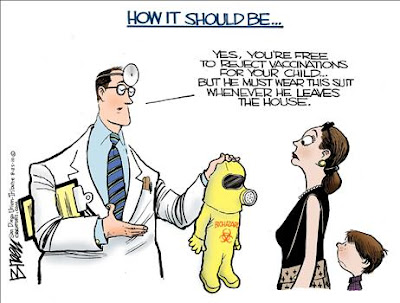
Obama's Manichean World
Mona Charen
8-27-10
President Obama has a weakness for thinking in categories. For someone who provokes swoons among liberals for his great intellect, he has repeatedly evidenced an unsophisticated, one might even say simple-minded, view of the world: Workers good; bosses exploitative. Borrowers good; lenders bad. Patients good; insurance companies bad. Again and again, the president and his spokesmen have justified their expansions of government power as efforts to help those who "through no fault of their own" find themselves in difficulties.
Many politicians traffic in this kind rhetoric during campaigns, but Obama has institutionalized it in policy.
One of those reifications -- the Home Affordable Modification Program -- now stands revealed as a failure.
Recall that in February 2009, President Obama proposed to solve a "crisis unlike we've ever known." It wasn't, the president insisted, that anyone had made poor decisions. "It begins with a young family ... They save up ... They choose a home that feels like the perfect place to start a life. They secure a fixed-rate mortgage at a reasonable rate, and they make a down payment, and they make their mortgage payments each month. They are as responsible as anyone could ask them to be." But then someone loses a job, a spouse has his or her hours cut, or a child becomes sick.
The president's $75 billion program guaranteed that homeowners with Fannie or Freddie mortgages would be eligible for refinancing to lower rates if their mortgages were between 80 and 105 percent of the home's worth. Other borrowers facing foreclosure would be able to refinance their mortgages down to 31 percent of their monthly income.
Didn't this mean that taxpayers who didn't buy too much house or who paid their mortgage bills on time would be subsidizing those who did not? No, the president insisted. "I want to be very clear about what this plan will not do: It will not rescue the unscrupulous or irresponsible by throwing good taxpayer money after bad loans. It will not help speculators ... It will not help dishonest lenders who acted irresponsibly, distorting the facts and dismissing the fine print at the expense of buyers who didn't know better. And it will not reward folks who bought homes they knew from the beginning they would never be able to afford."
The president never explained how the Treasury Department would differentiate "responsible" borrowers from "speculators" because in fact, it could not. Tea party protesters were not fooled. They carried placards saying "Honk if I'm paying your mortgage."
In March of this year, the Obama administration, tacitly acknowledging HAMP's failure, proposed new rules that would give jobless homeowners a three-month break on mortgage payments and offer more incentives to lenders to modify mortgages.
While the administration had boldly predicted in 2009 that HAMP would save 3 to 4 million homeowners, only 434,716 had seen their monthly payments permanently lowered as of July. A much larger number, 616,839 were booted from the program during the same period, usually for failing to make payments on time. As the Los Angeles Times noted in March, "The modifications, while delaying the foreclosure process, did not appear to be a long-term solution. About 52 percent of those with modified loans defaulted again after nine months."
Neil Barofsky, the special inspector general for the Troubled Assets Relief Program (SIGTARP for those who speak Washingtonese) blasted the program in a July report:
"Treasury's refusal to provide meaningful goals for this important program is a fundamental failure of transparency and accountability that makes it far more difficult for the American people and their representatives in Congress to assess whether the program's benefits are worth its very substantial cost.
"The American people are essentially being asked to shoulder an additional $50 billion of national debt without being told, more than 16 months after the program's announcement, how many people Treasury hopes to actually help stay in their homes as a result of these expenditures, how many people are intended to be helped through other subprograms, and how the program is performing against those expectations and goals. Without such clearly defined standards, positive comments regarding the progress or success of HAMP are simply not credible, and the growing public suspicion that the program is an outright failure will continue to spread.
In contrast to the Obama morality play, the foreclosure crisis was not a conspiracy of the rich and powerful against dutiful homeowners reliably making their monthly payments. It was the result of multiple follies by government, bankers, and individuals. Obama's instinct to insulate people from the consequences of their bad decisions (and yes, sometimes bad luck) amounts to subsidizing failure. The results are coming in daily -- persistent high unemployment, an anemic recovery, and billions upon billions of wasted taxpayer's money.
No comments:
Post a Comment